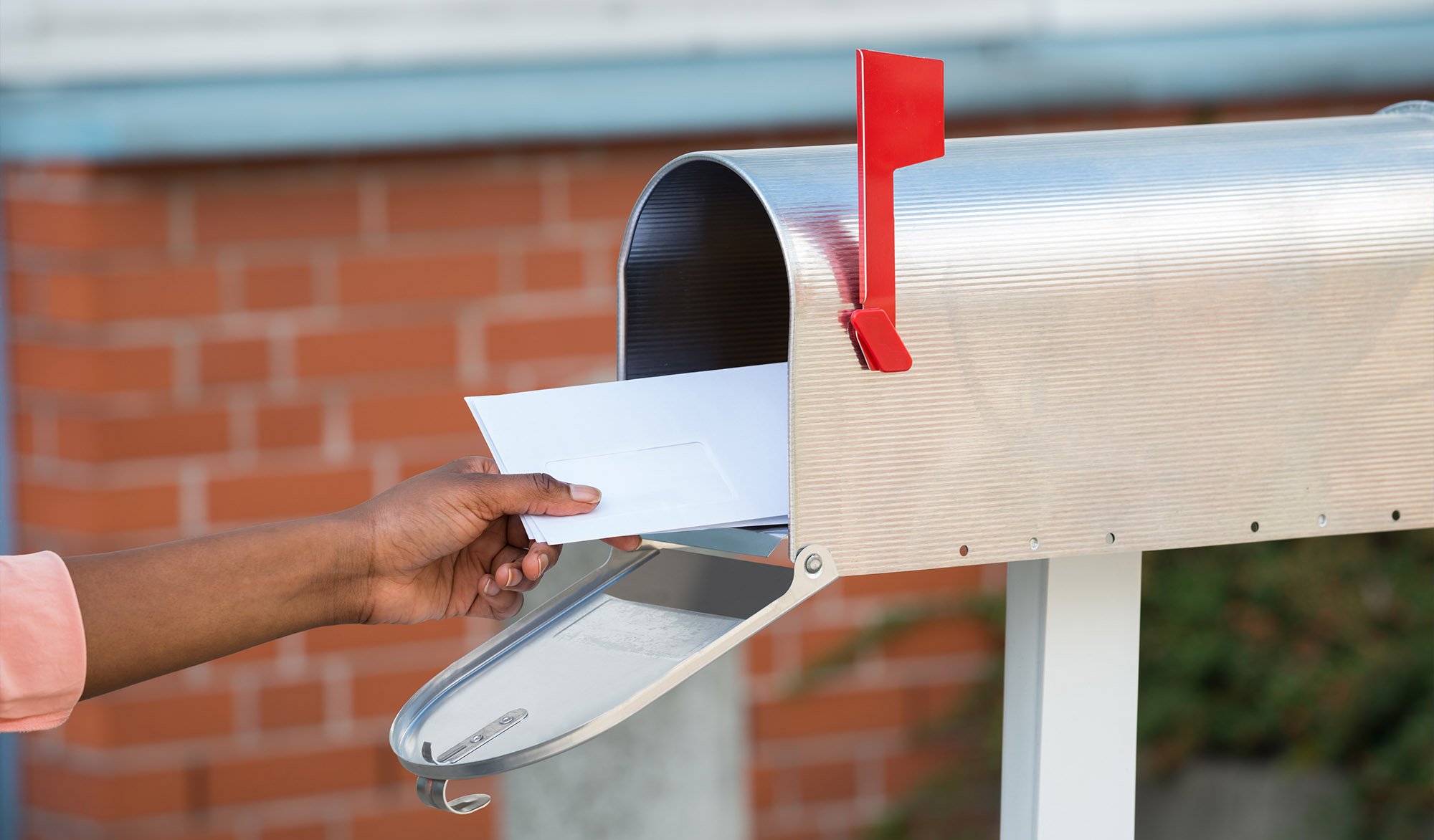Direct mail is thriving. According to statistics, consumers want to physically hold a mail piece and redeem paper coupons when making purchases. Finding a few pieces in a sometimes empty mailbox makes them feel special and they look forward to receiving mail from brands they care about.
These 20 statistics underscore how consumers feel about direct mail, outline how marketers are using direct mail, and demonstrate how direct mail is performing.
Direct Mail Usage
Research overwhelmingly demonstrates just how much consumers delight in scanning, reading, and saving their mail—and businesses know this, too.
1. BIA/Kelsey’s U.S. Local Advertising Forecast 2018 projected companies would spend about $38.5 billion on direct mail advertising.
The local media-focused research, consulting and advisory service company credited high response rates and return on investments (ROIs), among other benefits. Mobile advertisements trail, at $19 billion.
2. U.S. advertisers spend $167 per person on direct mail to earn $2,095 worth of sold goods, states a 2018 Forbes article—a 1,300 percent return on their investment.
With such significant results, it’s no wonder why advertisers turn to direct mail to market their products and services.
3. According to the U.S. Postal Service’s (USPS) Certified Direct Mail Professional (CDMP) program, 79 percent of households say they read or scan their daily mail.
The CDMP continues that 42 percent of recipients read or scan their mail pieces, while 70 percent are curious to find out what’s in their mailbox.
4. The USPS consumer and markets insights presentation 2016 Review of Mail Moments reported 82 percent of millennials are more likely to get the mail, 86 percent are most likely to pick it up at the first opportunity, and 92 percent personally sorted the last mail delivery.
Despite stereotypes tying millennials (18-39 years old) to the internet and mobile devices, the age group leads in picking up and sorting mail. They also spend an average of 9.2 minutes sorting it, compared to Boomers (60-75 years) at 8.6, and Gen X (40-59 years) at 7.5.
5. Eighty-eight percent of consumers surveyed by advertising and marketing company Valassis use paper coupons they’ve received in the mail.
Consumers use paper coupons from direct mail nearly 10 percent more than those printed from a computer—accounting for 79 percent of consumers. According to the trade group Data & Marketing Association (DMA)—formerly the Direct Marketing Association—more than 2.5 billion coupons were redeemed in 2015.
Direct Mail’s Perception
Although many may believe consumers are moving wholly toward the digital world of mobile phones, it’s just not true when it comes to marketing. When someone can hold a letter, postcard, or other package in their hands, they’re more likely to trust the products sold to them and the brand.
6. Forty-one percent of people look forward to checking their mail each day, according to a Gallup Poll.
The poll also reported that 60 percent of Americans felt a positive reaction when they received a magazine, and 83 percent felt happiness upon receiving a package.
7. According to an Epsilon study, 73 percent of U.S. consumers and 67 percent of Canadian consumers claimed they prefer direct mail for brand communications because they can read the information at their convenience.
As part of that same study, 59 percent of American and 65 percent of Canadian respondents agreed with the statement, “I enjoy getting postal mail from brands about new products.”
8. According to a USPS survey, 75 percent of millennial respondents said receiving mail makes them feel special.
To dispel millennial myths about physical mail, USPS conducted multiple surveys and studies to find out the generation’s true thoughts on direct mail. It found 33 percent of millennials have an active subscription to a newspaper or magazine, and 58 percent worry less about direct mail privacy than digital communications privacy.
9. Seventy-six percent of consumers trust ads and catalogs they receive in the mail when making a purchase decision.
In 2016, marketing publisher MarketingSherpa asked 1,200 customers which type of advertising channels they trust most when making a purchase. Direct mail came in third behind print ads in newspapers and magazines (82 percent) and television ads (80 percent).
10. Sixty percent of consumers say direct mail keeps brands top of mind.
According to the U.K.-based marketing provider Royal Mail MarketReach’s Private Life of Mail, more than half of the survey’s respondents feel advertising mail stays in their long-term memory stronger than other media, allowing for better recall at a later date.
Direct Mail Response Rates
Statistics show more people are interested in replying to direct mail promotions. This includes using coupon codes, visiting special landing pages, calling telephone numbers, and visiting stores.
11. In 2018, the response rate for prospect lists was 4.9 percent, and 9 percent for house lists.
Data analytics and consumer marketing company After Inc. reported the ANA/DMA Response Report 2018 found house list responses had nearly doubled since the previous year and were the highest since the advertising firm began publishing the report.
12. Households reported they respond to about 13 percent of First-Class advertising mail and 11 percent of Standard Mail, according to the USPS Diary Study 2016.
Households may respond to another 15 percent of Standard advertising, and 13 percent of First-Class advertising.
13. The direct mail response rate increased by 43 percent, from 2015 to 2016.
Additionally, the ANA/DMA Response Rate Report 2018 found a 12.4 percent response rate among people ages 18 to 21.
14. According to the ANA/DMA Response Rate Report 2018, Personal URLs (PURLs) were the top direct tracking method, at 61 percent.
This was followed by call centers and telephones (53 percent) and codes or coupons (43 percent).
15. In its Response Rate 2012 Report, the DMA noted direct mail’s 4.4 percent response rate, compared to email’s 0.12 percent.
The DMA also calculated average response rates for each type of direct mail, all individually stronger than email. Letter-sized mail boasted 3.4 percent, while oversized mail had 3.95 percent. Catalogs garnered the largest response rate, at 4.26 percent. In addition to beating email out for replies, direct mail crushed display ads (0.04 percent) and paid searches (0.22 percent).
Direct Mail vs. Email
As consumers find their email inboxes filling with more promotions than they have time to read, their trust in and preference for traditional paper mail has grown.
16. National Mortgage Professional Magazine found that 92 percent of millennials are influenced to make a purchase as a result of direct mail, compared to 78 percent for email.
The publication also reported 90 percent of millennials claimed a preference for receiving promotions via direct mail over email.
17. Direct mail requires 21 percent less cognitive effort to process than digital media, including email.
Consumer neuroscience research company True Impact conducted a study of 270 participants to understand the way consumers interact with direct mail in comparison to online media, using EEG data and eye tracking. It concluded a motivation response 20 percent higher for direct mail.
18. Fifty percent of consumers prefer direct mail to email.
Marketing research Epsilon surveyed 2,226 U.S. consumers for the third Consumer Channel Preference Study, according to digital and data-driven marketing news outlet DMN. It also found 60 percent of participants enjoyed checking their mailboxes and 75 percent of consumers feel they get more email than they can read.
19. More than 30 percent of baby boomers were influenced by catalogs, advertising cards, or flyers in the mail to purchase a product or service, outperforming email, at less than 25 percent.
Marketing Charts, a marketing data firm, surveyed more than 2,000 U.S. adults to find direct mail surpassed other channels of advertising, including recommendations from friends (just short of 30 percent), television ads (approximately 26 percent), and magazine ads (less than 20 percent).
20. Advertising mail can last in households for up to 17 days compared to email, which can have a lifespan of a few seconds.
The aforementioned Private Life of Mail found door drops can stay in homes for up to 38 days, and bills or statements can remain for at most 45 days.










